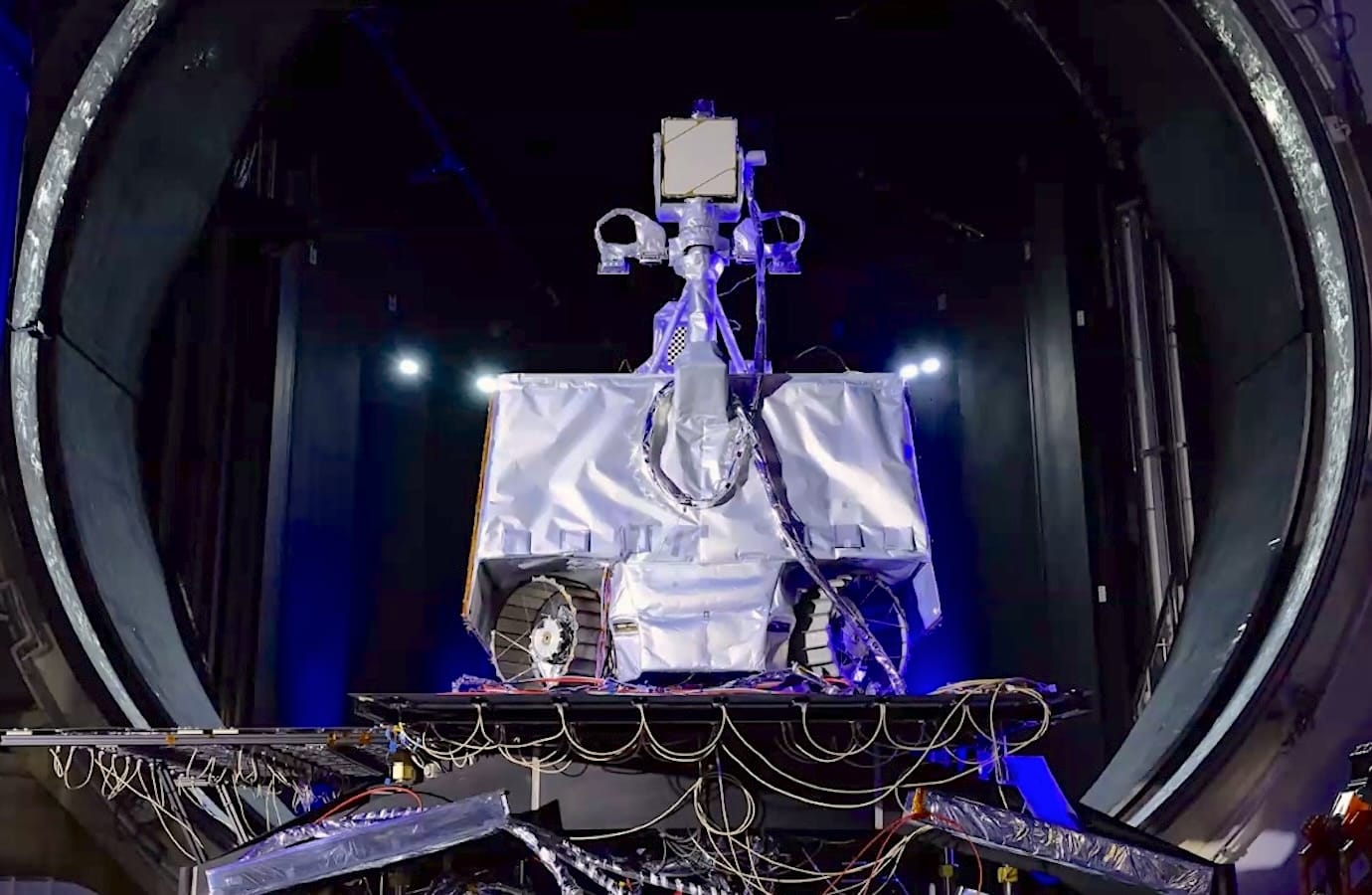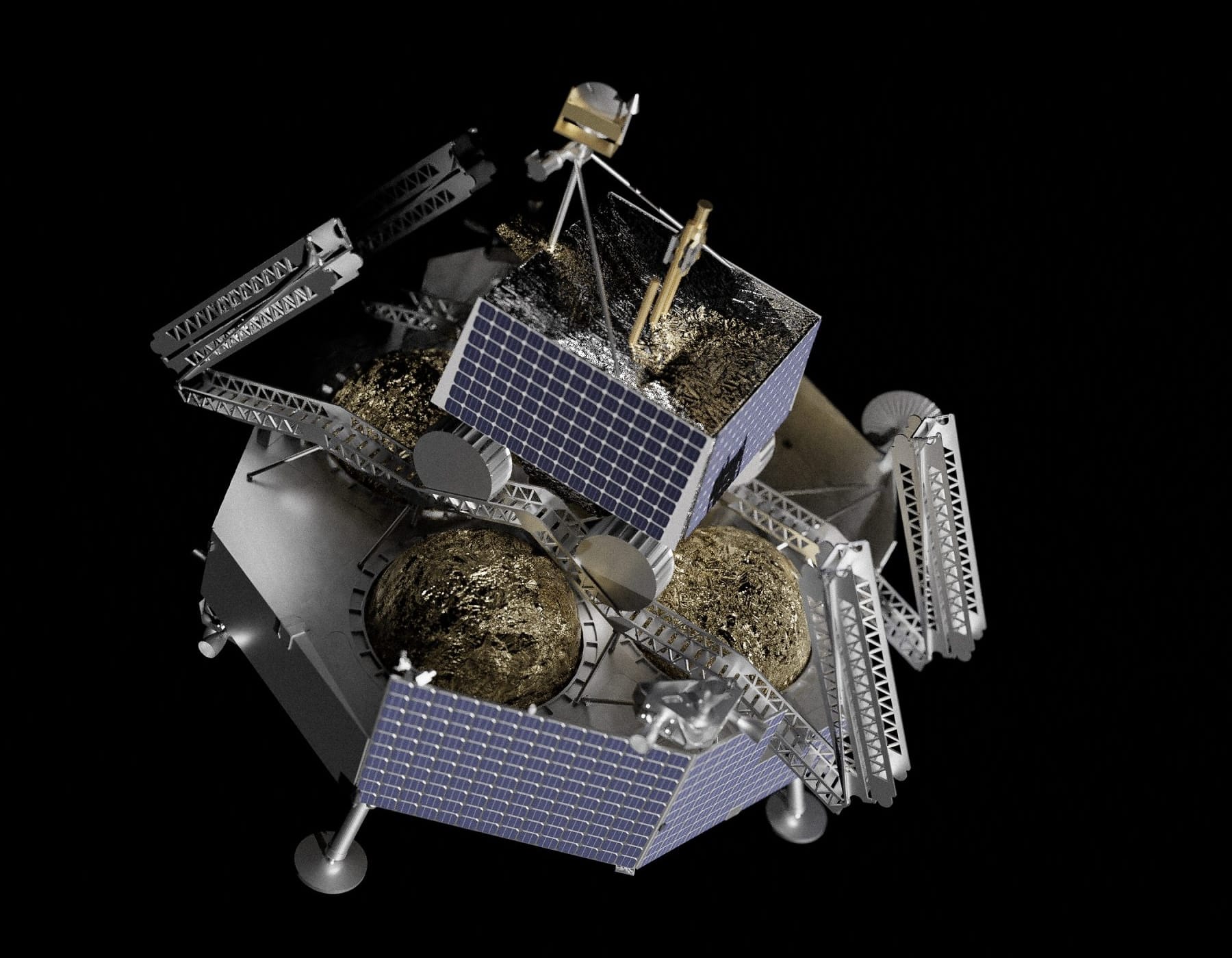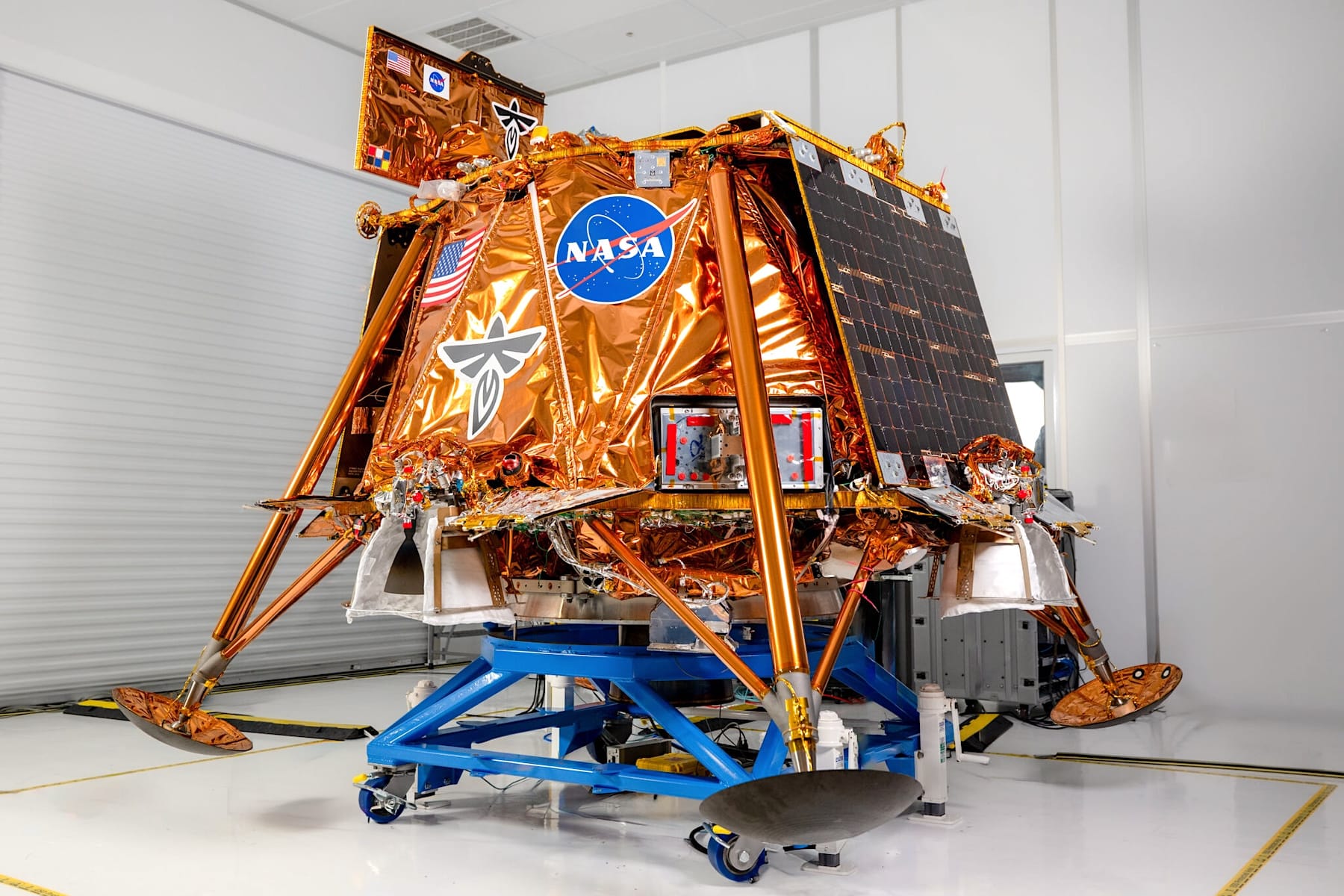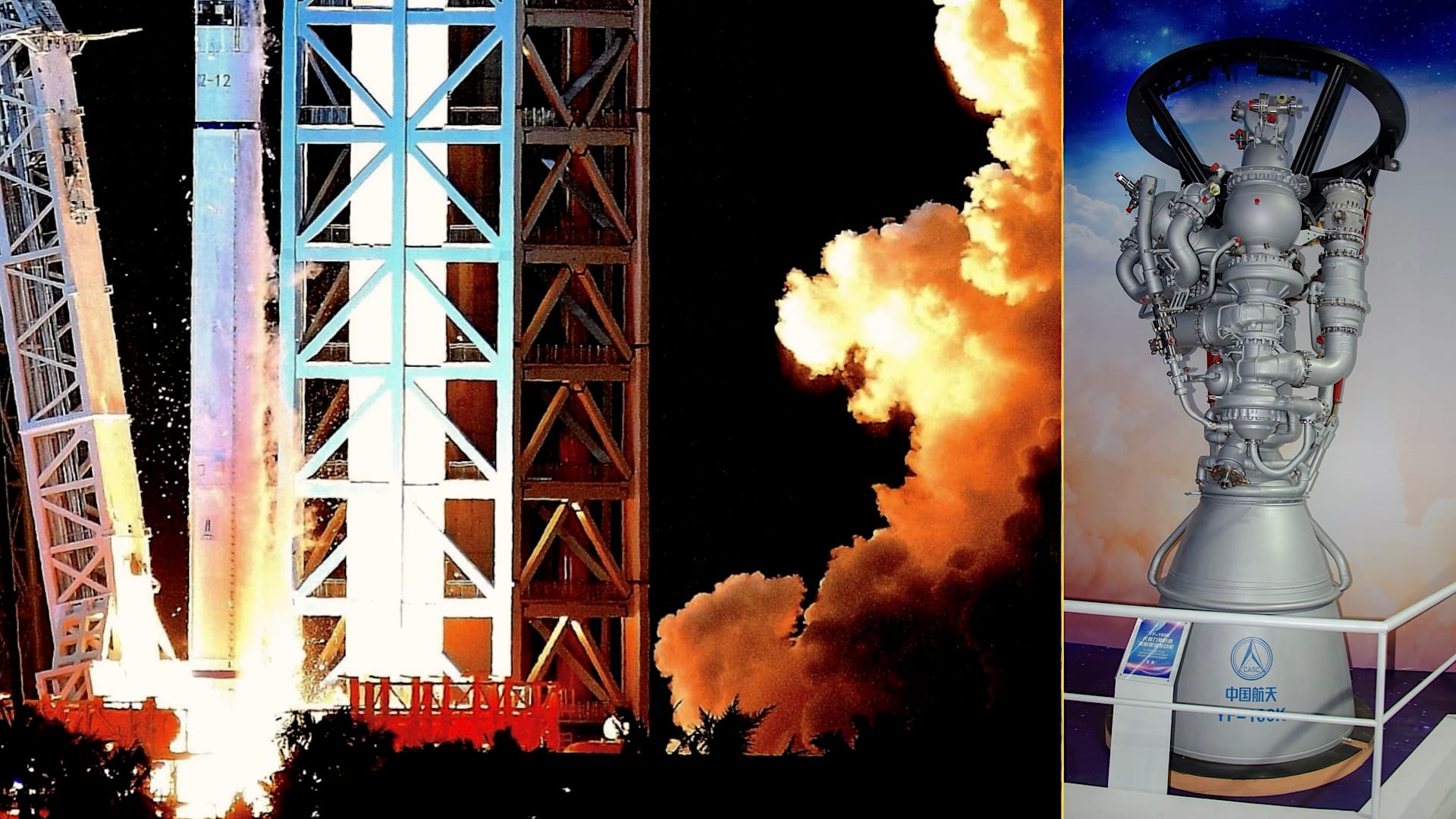Moon Monday #204: The one with no tying theme, like a VIPER-less Artemis
Read to the end to see a reader gift made of processed lunar regolith.
Yes, the headline is in the style of episode titles of “Friends”. Here’s one more, just because.
Waiting for VIPER

After filing a Freedom of Information Act request, SpaceNews received a copy of NASA’s response to members of the US Congress who wrote an open letter to the agency chief on September 6 questioning the agency’s intent to cancel the VIPER rover mission built to uniquely study lunar water deposits. The response revealed that NASA anticipated having to cancel at least one CLPS mission to keep VIPER’s launch on track for late 2025. And if VIPER’s launch were to get delayed by another year, one more CLPS flight would have to bite the budgetary dust. Either of these scenarios would also delay that many number of non-canceled CLPS missions. Cumulatively, NASA did not find this tradeoff acceptable.
And so the agency pursued the path of asking US organizations to propose a mission of their own that would fly and operate VIPER at virtually no cost to NASA. However, this approach decidedly fails at VIPER’s original goal of helping scientists constrain the nature, accessibility, and potential abundance of surface and near-surface water ice deposits on the Moon’s south pole. This goal was vital to systematically planning future sustained robotic and human Moon missions. Moreover, while NASA said in July that it expected to overspend on VIPER after its standard pre-launch tests to iron out final hardware kinks, VIPER actually aced them all as per mission lead Anthony Colaprete’s talk at the 2024 annual meeting of the NASA-backed Lunar Exploration Analysis Group (LEAG).
To truly save VIPER as envisioned, ultimately the US Congress needs to provide the necessary additional funding to NASA, which is not the case right now. Jack Kiraly reported in July that the US Senate’s NASA funding proposal for FY2025 did not include an explicit mention of VIPER or any funding increase necessary to save the project. Note that this situation is worse than the earlier one, wherein the draft NASA budget from the US House of Representatives—the lower house in the US Congress—had at least proposed up to $75 million extra in lunar science funding. As Michael Greshko noted back then, it could’ve potentially allowed NASA to allocate the funding needed to fly VIPER but would come at the cost of some other mission or program since the overall budget remains flat.
The Planetary Society has been holding multiple meetings of lunar scientists with US congressional staff, including those in the appropriations subcommittees that handle NASA’s budget, to vouch for reinstating the VIPER mission. The discussions were backed by a letter signed by more than 5,000 space experts. However, with the aforementioned US Senate proposal for FY2025, the extra funding option of $75 million put forth by the House of Representatives doesn’t seem to be on the table anymore. It’s also unclear if the incoming administration would be interested enough to tackle this problem next year.
File this situation under the increasingly stressful episodes of Cost plus plus, Artemis cannot catch a break, and Artemis IV faces yet another BLOCK-er. From the outside, it seems ridiculous that a vital part of Artemis like VIPER can get cancelled for a hundred million dollar gap while projects related to the SLS rocket can keep ballooning by a billion dollars each, and then some more. Yes, I’m aware it’s not how budget appropriations work in the US, and that VIPER can’t just get money from other projects, but it doesn’t change the fact that the scramble to save VIPER is at least an inefficient one.
I hope VIPER ultimately lies where it belongs—the Moon.

More mission updates
- ispace Japan announced that the company’s second Moon lander has arrived in Cape Canaveral, Florida to prepare for a SpaceX Falcon 9 rocket launch no earlier than January 2025. In September, the company revealed this M2 mission’s landing site to be in the lava plains of Mare Frigoris at 60.5° N, 4.6° W, which will be explored by ispace’s rover. The company said in its previous update that the lander was “progressing smoothly” through the standard series of launch and space environmental tests at JAXA’s Tsukuba Space Center. With those tests successful, the next milestone to look forward to will be the lander’s liftoff.

- Firefly announced that after passing pre-launch tests at JPL, its first Moon lander Blue Ghost part of NASA’s CLPS program is about to be shipped to SpaceX for a Falcon 9 launch during a six-day window around mid-January 2025. Blue Ghost aims to descend in the lava plains of Mare Crisium at 18.56°N, 61.81°E, carrying 10 NASA sci-tech payloads primarily to study the lunar environment. The mission will see NASA’s first attempt to get a GPS lock from the Moon.
Also see: How engineers test Moon landers on Earth
Many thanks to The Orbital Index, Off Planet Research and Louis-Jérôme Burtz for sponsoring this week’s Moon Monday! If you too appreciate my efforts to publish this curated community resource for free, support my independent writing. 🌙
More Moon

- With the November 30 debut launch of the semi-cryogenic Long March 12 rocket, China has successfully flown the YF-100K engine, the same kind that will power the first stage(s) of China’s upcoming heavy-lift, crew-capable Long March 10 rocket, whose lunar variant will launch humans to the Moon by end of decade. Andrew Jones previously reported that CALT successfully conducted a 5-meter-fairing separation test of the Long March 10’s non-lunar variant last month, with the lunar variant test upcoming.
- ESA has begun using its versatile LUNA analog facility to test radar measurement techniques that would help future missions to the Moon’s south pole localize water ice deposits beneath the surface being explored.
- Going to the Moon isn’t only about lunar exploration. I wrote an article on how India’s Chandrayaan 1, 2 and 3 spacecraft have captured a solar eclipse, studied the Sun’s flares, and observed Earth as an exoplanet respectively from the vantage point of the Moon!
- Rice University is hiring a postdoc associate for two years to work on samples related to lunar Mg-suite magmatism

A reader, David Evinshteyn, gifted me this structure made from processed lunar regolith simulant. The etched text reads Moon Monday and 52, the latter being the number of revolutions our Moon has completed around Earth since I started my Moon Monday blog+newsletter. What a nice way to remark on four years of covering global lunar exploration developments! I’m so grateful to have such thoughtful readers. ^_^
